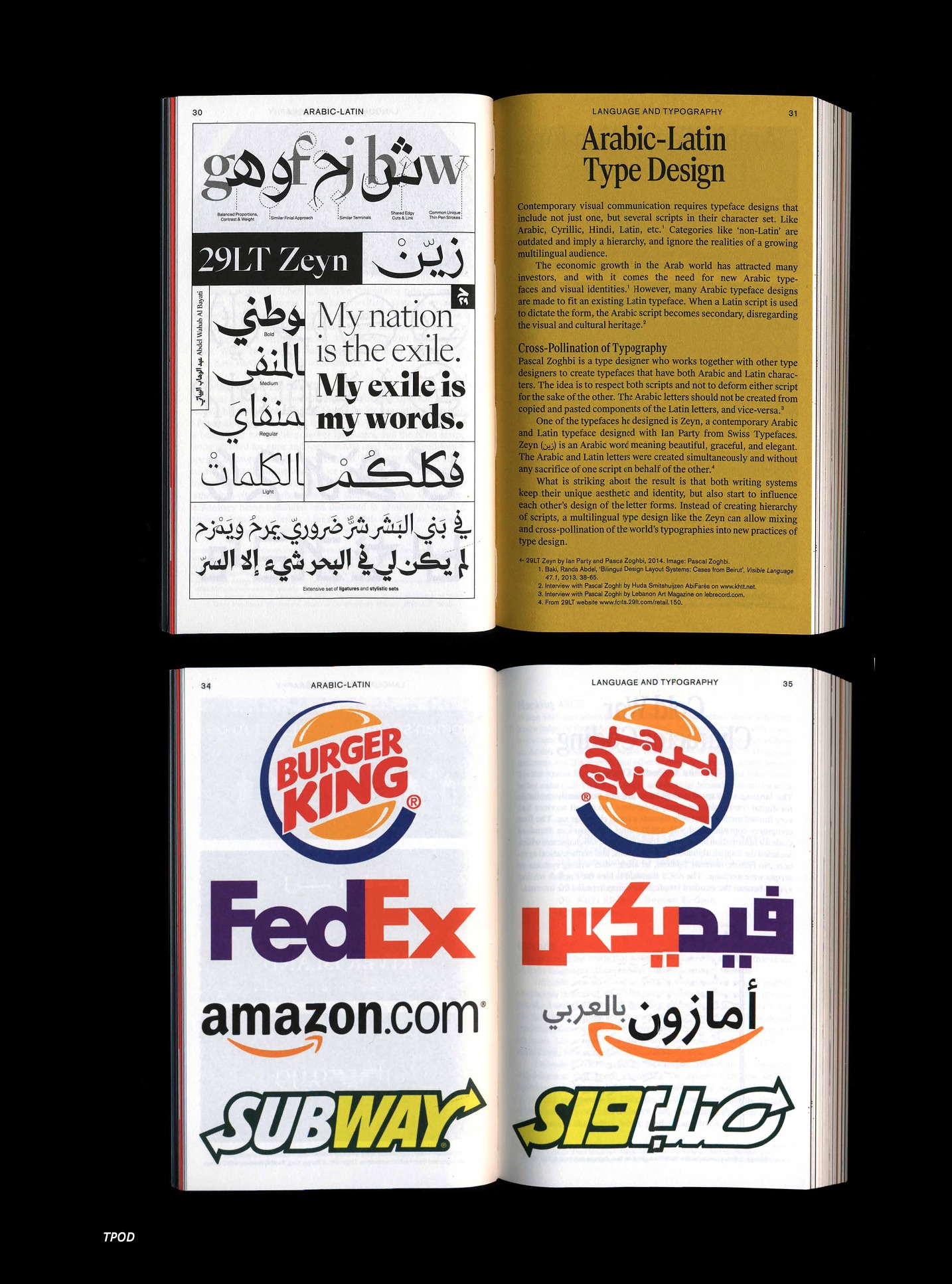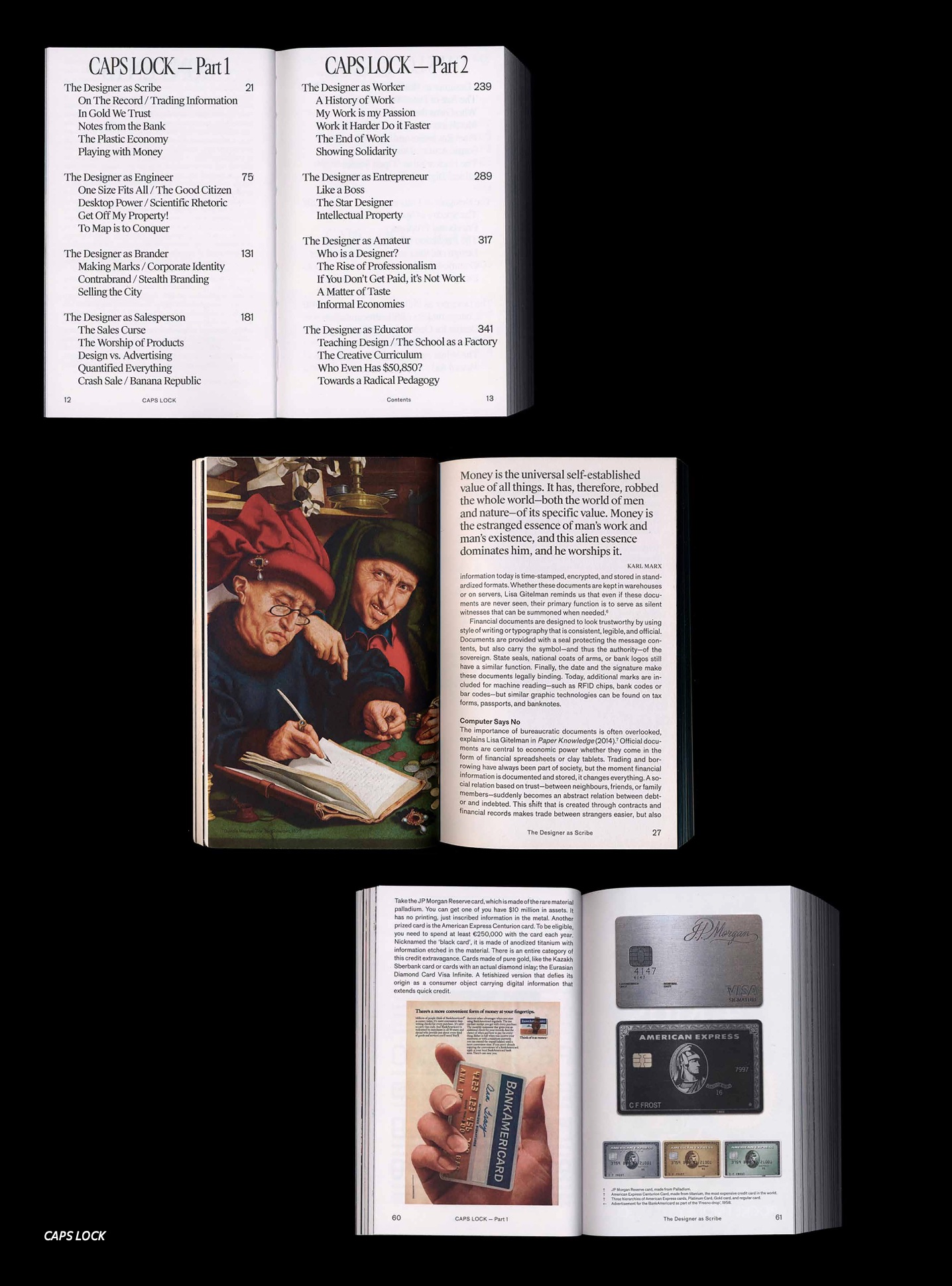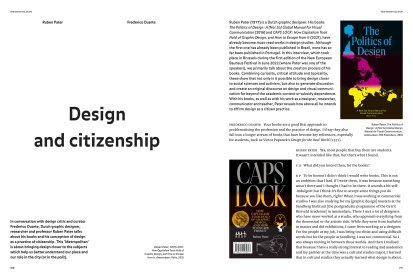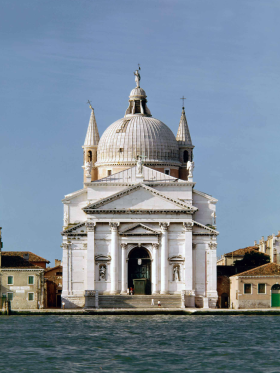Ruben Pater (1977) is a Dutch graphic designer. His books The Politics of Design: A (Not So) Global Manual for Visual Communication (2016) and CAPS LOCK: How Capitalism Took Hold of Graphic Design, and How to Escape from It (2021), have already become must-read works in design studies. Although the first one has already been published in Brazil, none has so far been published in Portugal. In this interview, which took place in Brussels during the first edition of the New European Bauhaus Festival in June 2022 (where Pater was one of the speakers), we primarily talk about the creation process of his books. Combining curiosity, critical attitude and topicality, these show that not only is it possible to bring design closer to social sciences and activism, but also to generate discussion and create an original discourse on design and visual communication far beyond the academic context or subsidy dependence. With his books, as well as with his work as a designer, researcher, communicator and teacher, Pater reveals how above all he intends to affirm design as a citizen practice.
In conversation with design critic and curator Frederico Duarte, Dutch graphic designer, researcher and professor Ruben Pater talks about his books and his conception of design as a practice of citizenship. This ‘Metropolitan’ is about bringing design closer to the subjects which help us better understand our place and our role in the city (or in the polis).
FREDERICO DUARTE Your books are a good first approach to problematising the profession and the practice of design. I’d say they also fall into a longer stream of books that have become key references, especially for students, such as Victor Papanek’s Design for the Real World (1971).
RUBEN PATER Yes, most people that buy them are students. It wasn’t intended like that, but that’s what I found.
FD What did you intend then, for the books?
RP To be honest I didn’t think I would write books. This is not an ambition that I had. If I write them, it was because something wasn’t there and I thought I had to be there. It sounds a bit self- ‑indulgent but I think it’s fine to accept some things you do because you like them, right? When I was working at commercial studios I was also studying for my [graphic design] masters at the Sandberg Instituut [the postgraduate programme of the Gerrit Rietveld Academie] in Amsterdam. There I met a lot of designers who have never worked at a studio, who approach everything from the theoretical or the artistic side. While they went from bachelor to master and did exhibitions, I came from working as a designer. For the people at my job, I was being too elitist and using difficult words but for the people at Sandberg, I was too commercial. So I was always moving in between those worlds. And then I realised that because I have a really strong interest in reading and academics and my partner at the time was a cultural studies major, I learned that in cultural studies they actually learned what design is about. Their textbooks explain what images do and how ideology influences design. You don’t learn this in design, you learn how to make it. I thought they needed to be mandatory at every design school, but they aren’t often used. These books explain that all images are ideological or that all communication is biassed, but then they don’t give a lot of examples. So I thought: you need to translate this for people who haven’t read Foucault, that haven’t read this or that book. This translation, which I enjoy, is also a bit my in-between position. So I started to collect visual examples that reflected what I was reading from, let’s say, philosophy and cultural studies, to translate without always referring to what some old European white guy wrote a long time ago and that I have to read again.
FD So you first studied design in a more technical school?
RP In the Netherlands it’s common to first study in a kind of applied arts or sciences school, which is not a university. So it’s very light in theory. At my school [St. Joost School of Art and Design, in Breda] l had few hours of theory a week and we didn’t have to read or write a lot. I had amazing tutors and the assignments were really strong on a conceptual level, but they were always [thought] from the perspective of working for a client, so our graduation work was a book for this client, posters for that client – this is very different from what I, for example, teach now and the kind of work the students graduate with. After graduating [around the year 2000], I immediately started working because I needed to have money.
FD It’s interesting what you say about theory because I think your books make theory tangible.
RP Maybe. When I was working for studios we always had the same kind of clients. People came to us from real estate, or from government, looking to brand these business projects always from the same positions. And I thought: why do people never come to us with questions about climate change or questions about inequality? Because nobody wants to pay for that. And then you realise that the things we see around us are shaped by the people who have the money. The relationship between design and ideology then became very clear to me. And I’m not necessarily criticising that, just realising it. That frustrated me as a designer. When I started to make my own website after my masters, I decided very consciously to show what went before and after each project. Not only talking about ’this is the image’, but how it was made, what were the mistakes I made and how it ended up. And I also talk about it honestly. I wanted to embrace the process and the failure, not see graphic design as this kind of black box that you open and out comes this amazing poster that wins an award. Nobody talks about all the proposals that went wrong. I don’t think that necessarily somebody’s to blame: it’s kind of the way that designers have to present because you have to present a compelling story that is flawless and amazing.
"When I started to make my own website, I decided very consciously to show what went before and after each project. Not only talking about ’this is the image’, but how it was made, what were the mistakes I made and how it ended up."

Ruben Pater
The Politics of Design: A (Not So) Global Design Manual for Visual Communication
Amsterdam: BIS Publishers, 2016

Ruben Pater
CAPS LOCK: How Capitalism Took Hold of Graphic Design, and How to Escape from It
Amsterdam: Valiz, 2021
FD Designers sell success.
RP And you have to win against the other studios. That is also the logic of design. I try to embrace this kind of complexity and nuance. And with that comes the theory behind it. The end of the 2000s [when I started working on the book] was also the period when Dutch design came into a kind of crisis. Dutch design has always been very Dutch-nationalist and white and the art schools were also not very diverse. That was an issue for me then, because I missed a kind of excitement and an interest in difference: it was just too much the same. So I became really interested in how you design in Turkish, for example: what is the history behind it? How does it work with Arabic, what kind of different images and what kind of different ways of communicating do you have? And why is that not part of the conversation? That is where my first book comes from.
FD Your books foster a kind of post-national or transnational discussion by discussing issues in design beyond borders. Especially since the publication of your first book, how have you been involved in those discussions, or what kind of feedback have you received from readers?
RP I found I am comfortable in telling stories. This is something that comes from teaching but also from presentation skills that I learned. Designers are good presenters: they usually know how to tell a convincing story; they use the right visuals for it. That’s the sort of thing I employ in the book. I also found it interesting to understand how my books are received, as I talk about other cultures. This is already a problem from a European perspective, being myself a white man and having the danger of assumptions. Some things in the book I would formulate differently now. People involved in decolonial theory in the US have complimented me on my book, but they of course never ask me to come to talk about these aspects of the book because if you have read my book, you will not invite a white man to talk about inclusivity. So the success of my first book also has its limits for me, which is logical. I get a lot more speaking invitations about CAPS LOCK precisely for this reason.
[...]





Share article